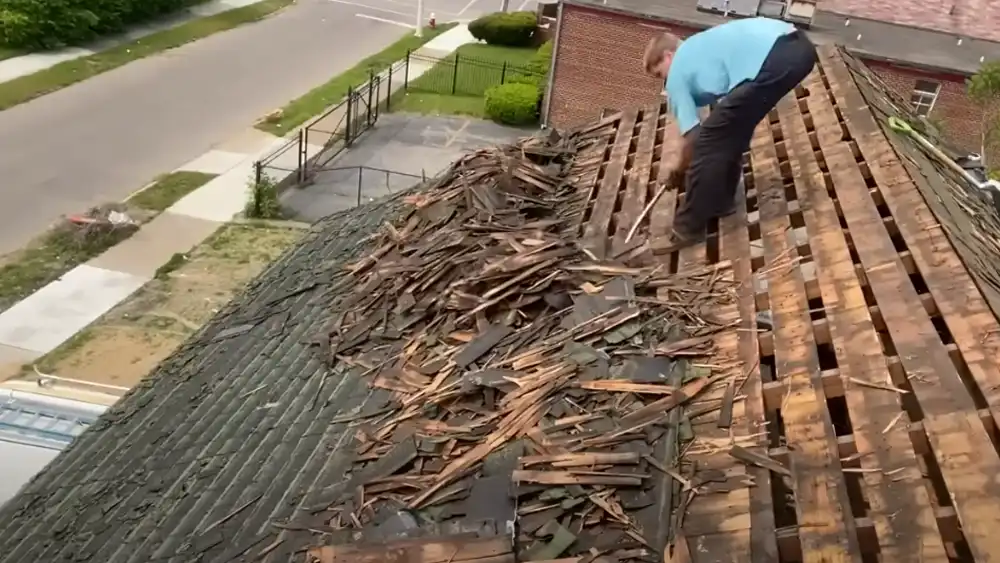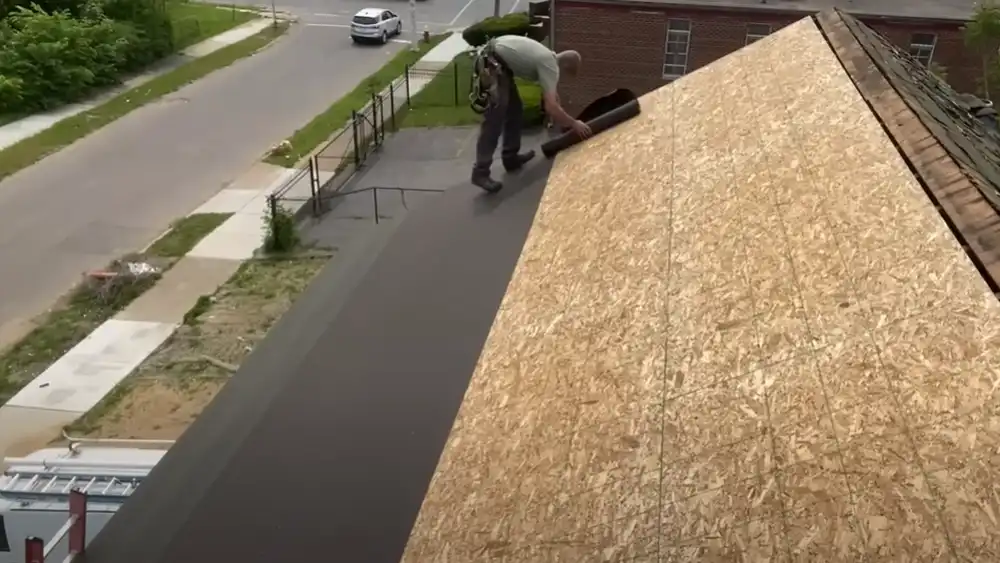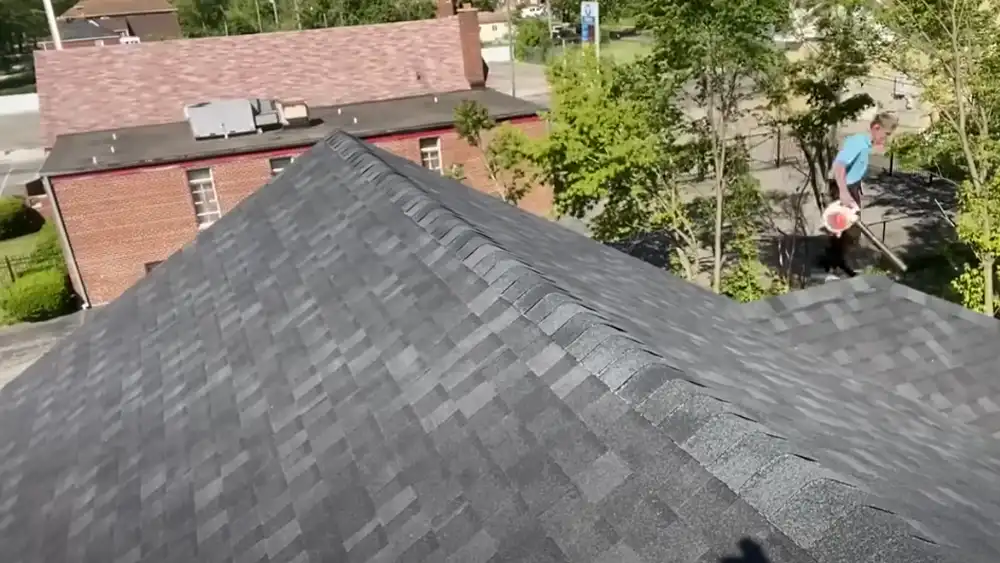Warning Signs You Need a New Roof

A roof is an essential component of your home, acting as the first line of defense against the elements and providing shelter from the external environment. However, like all parts of a house, roofs have a limited lifespan and will eventually need to be replaced. Recognizing the early warning signs of a failing roof can save you time, money, and potential headaches down the road. In this guide, We will explore the top six indicators that it may be time to invest in a new roof, helping you protect your home and ensure long-term peace of mind.
Roof Replacement Signs: 6 Warning Indicators
1. Shingle Damage
Shingle damage is one of the most visible and common signs that you may need a new roof. Over time, shingles can become curled, cracked, or completely missing due to harsh weather conditions such as heavy rain, snow, wind, or hail. This kind of damage not only affects the appearance of your home but also weakens the protective barrier that prevents water infiltration.
When shingles are compromised, the underlying roofing materials remain exposed to harsh elements, elevating the risk of leaks and water damage. Regular inspections can help spot these issues early. If a significant portion of your roof’s shingles is damaged or missing, it’s wise to consider a roof replacement to maintain the integrity of your home. The people behind https://distinctiveroofing.net/roofing/jupiter/ and other service providers note that a roofing expert will be able to assess the extent of damage and recommend the best course of action. They can also suggest more durable materials that can withstand harsh weather conditions and provide better protection for your home.
2. Sagging Roof Deck
A sagging roof deck is a potentially serious concern that often indicates structural damage beneath the surface. This drooping can result from prolonged water exposure, poor installation, or excess weight on the roof. If you notice sections of your roof that appear to be uneven or bowing, it’s time to take immediate action to assess and address the underlying causes.
Ignoring a sagging roof can lead to more severe problems, including complete roof failure or collapse. It’s essential to contact a professional roofer to evaluate the condition of the roof deck. Depending on the extent of the damage, they may recommend reinforcing the structure or replacing the roof altogether to ensure your home remains safe and secure.
3. Persistent Leaks and Interior Water Damage

If you are experiencing frequent leaks or noticing water stains on your ceilings or walls, it’s a clear indicator that something is wrong with your roof. These leaks often start small but can progress rapidly, leading to more extensive water damage throughout your home, including mold growth and structural problems.
Addressing leaks early is crucial. If left unresolved, they can compromise the insulation and integrity of your home’s structure. A thorough inspection by a roofing specialist can help determine the severity of the problem. In some cases, repairing small sections may suffice, but extensive leaks typically necessitate a complete roof replacement.
4. Rising Energy Bills
An inefficient roof can cause a significant spike in your energy bills. When roofing material becomes damaged or deteriorates over time, it can lead to poor insulation and cause your home to lose heat in the winter or retain it in the summer. This forces your HVAC system to work overtime, resulting in increased energy consumption.
Pay attention to fluctuations in your energy costs. If there’s an unexplained rise, your roof may not be adequately insulating your home. Investing in a new roof can resolve these inefficiencies, helping to maintain a comfortable indoor temperature while reducing energy expenditures and enhancing overall energy efficiency.
5. Granule Loss
Asphalt shingles come with a protective coating of granules that safeguard against UV rays and lend extra weather resistance. Over time, these granules can wear away due to age or excessive exposure to the elements. If you notice bald spots on your shingles or find granules accumulating in gutters or downspouts, it’s a sign your roof is wearing out.
Granule loss compromises your roof’s ability to fend off harsh weather, putting your home at increased risk for further damage. This loss is often indicative of advanced shingle deterioration, and a professional assessment will help determine the extent. Often, excessive granule loss points to the need to replace the roof.
6. Age of the Roof

Age is a critical factor when assessing whether your roof needs to be replaced. Most roofing materials have a life expectancy, with asphalt shingles typically lasting 20 to 30 years. As a roof ages, materials deteriorate and become less effective at protecting your home. Determining the age of your roof and its expected lifespan is essential when planning for a replacement.
If your roof is approaching or has exceeded its lifespan, it’s prudent to consider a replacement, even if there are no visible signs of damage. By proactively replacing an old roof, you can avoid unexpected failures and ensure your home’s protection well into the future. life can also help extend a roof’s lifespan, but eventually, age will necessitate a full replacement for optimal security.
Conclusion
Recognizing the early warning signs of a failing roof is crucial for maintaining your home’s integrity and protecting your family. If you notice any of these warning signs, it’s best to contact a professional roofing contractor for an assessment. They can provide expert advice on whether a repair or complete replacement is necessary, helping you make informed decisions that will safeguard your home for years to come. Investing in a new roof may seem daunting, but it ultimately offers peace of mind knowing that your home and loved ones are safe from external elements. By staying vigilant and addressing potential issues as they arise, you can avoid costly repairs and ensure the continued protection and longevity of your home’s roof.

news via inbox
Sign up and never miss out on the latest news and updates at HighStuff




